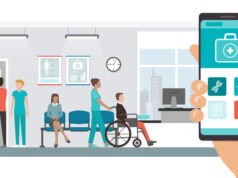
Health insurer Cigna and the Department of Veterans Affairs have partnered in an effort to aid veterans with chronic pain who are also at risk for opioid misuse.
By teaming up, the organizations seek to educate healthcare providers as well as veterans and their families about safe opioid use.
In a statement, Cigna president and CEO David Cordani noted that his organization plans to share its resources and practices to help veterans.
The VA and Cigna also intend to promote existing support resources like the Veterans Crisis Line and Cigna’s Veterans Support Line.
“This partnership is in line with VA’s priorities of transforming our business systems and supporting more robust partnerships with state and local communities,” VA Secretary Robert Wilkie said in a statement. “By partnering with Cigna, we have extended our reach to help improve the way healthcare providers approach opioid use and we demonstrate our commitment to place Veterans’ safety and well-being above all.”
The ultimate aim of the partnership, which was formalized in early March, is to improve opioid use-related patient-provider interactions and boost the delivery of care and health outcomes for veterans.
As the opioid epidemic rages on, other organizations are working to offer solutions to the problem.
At the Health 2.0 conference last fall, startups in the $50,000 Robert Wood Johnson Foundation Opioid Challenge pitched ideas on using tech to support substance abuse treatment. The winner of the competition was Boston-based Sober Grid, which created a platform to help users locate nearby treatment centers. It also offers telehealth capabilities that can connect patients to professional and peer counselors. The startup was founded back in 2015.
Additionally, Blue Shield of California launched a Narcotic Safety Initiative in 2015. Earlier this year, the results of that project showed a 56 percent reduction in overall opioid use among the payer’s members with chronic, non-cancer pain compared to 2014.
Photo: Stuart Ritchie, Getty Images







